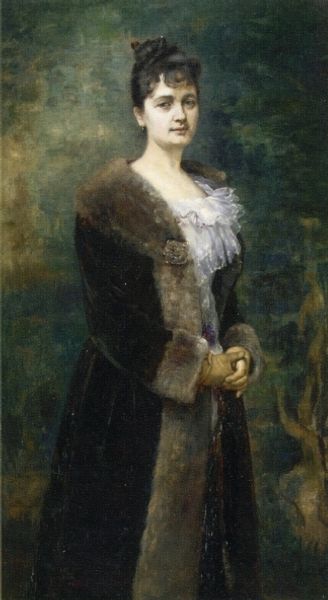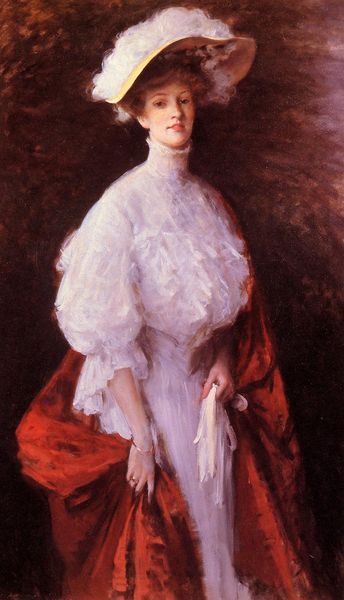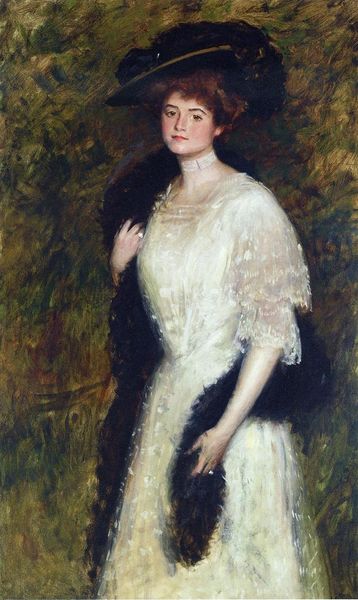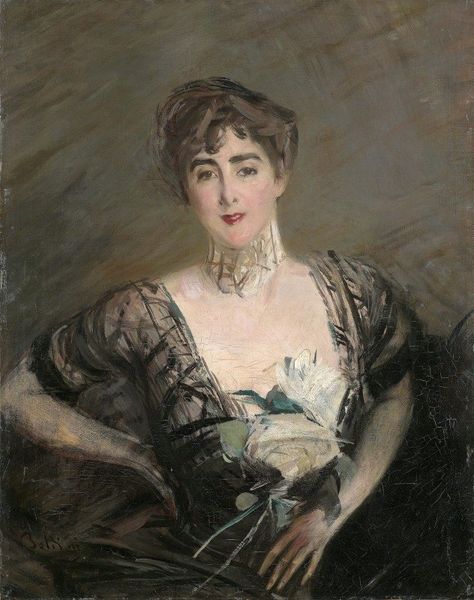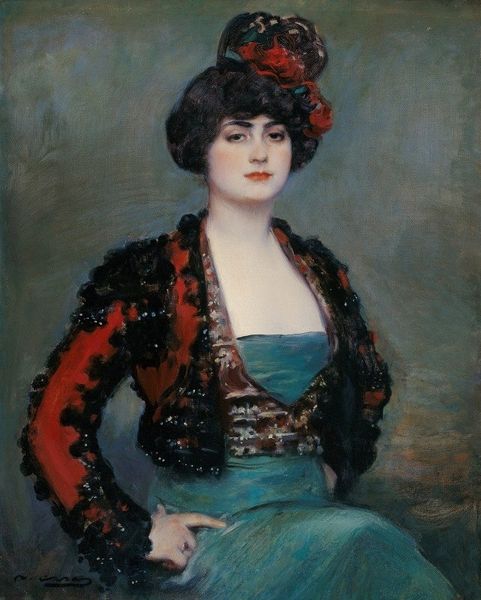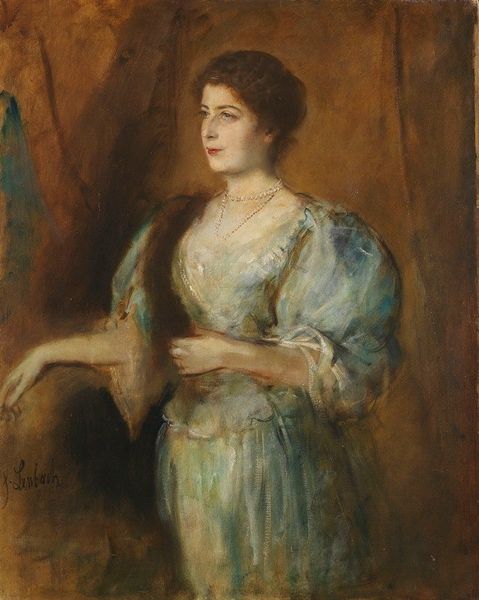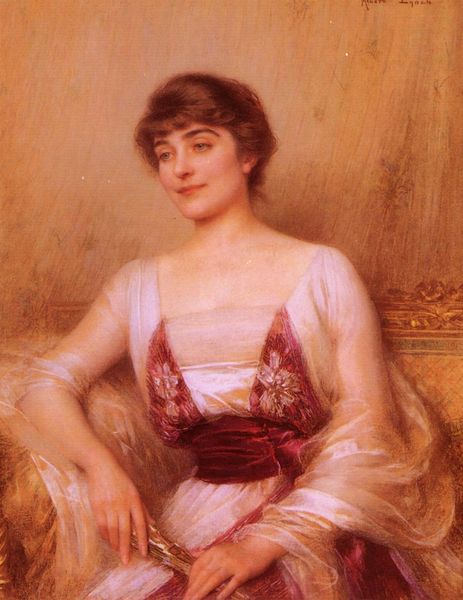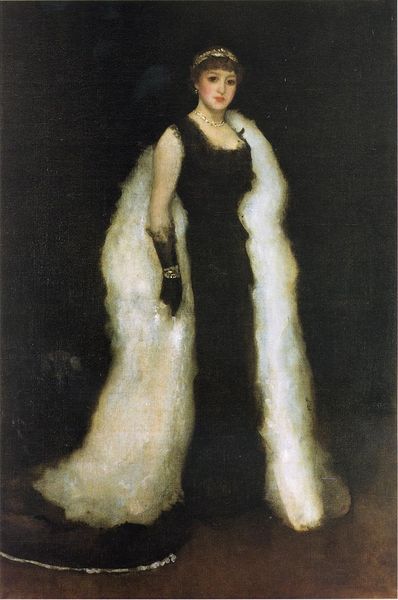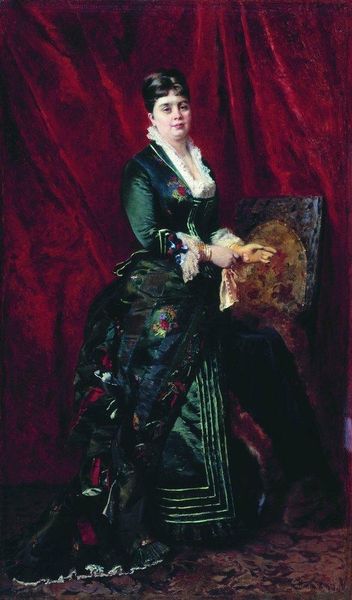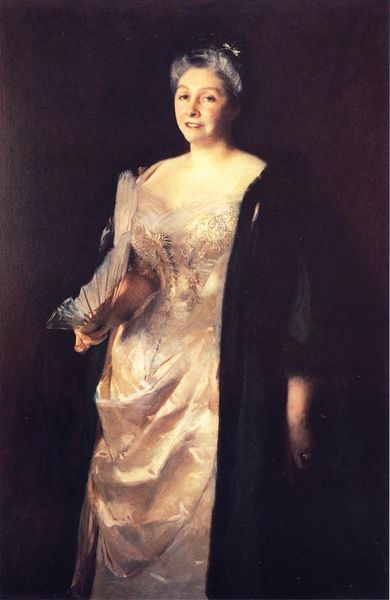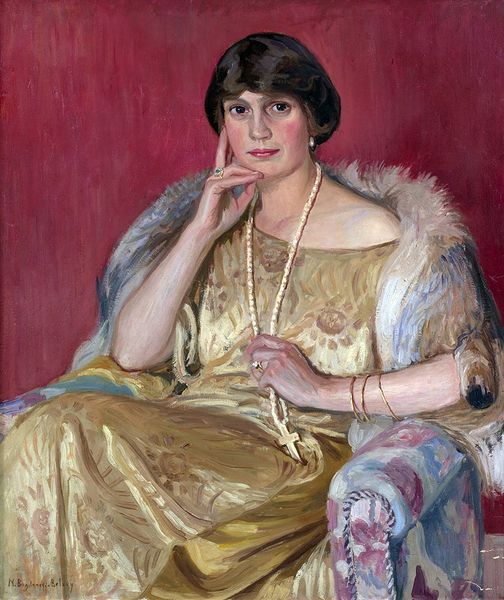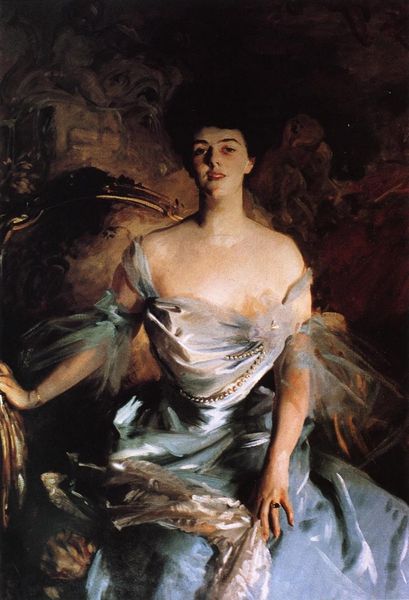
Dimensions: 108 x 135.3 cm
Copyright: Public domain
Curator: Up next, we have William Merritt Chase's "Portrait of Mrs. William Merritt Chase," painted around 1910. This stunning oil on canvas is held in a private collection. Editor: My first impression is one of subdued elegance. There's a real stillness to the portrait, despite the visible brushwork and dynamic color choices. The pose is so poised, very Edwardian. Curator: Absolutely. The impressionistic style softens what might otherwise be a very formal portrait. Consider how the light delicately defines her face, almost dissolving the edges of her features. It’s very typical of Chase's interest in capturing fleeting moments. Editor: And look at the clothing and jewels! These pieces certainly speak volumes about her status. The dark, shimmering fabric, offset by the rich emerald of her sash, makes it impossible to ignore how she and William positioned themselves in New York’s art world. Curator: The color play here is subtle yet significant. The darker tones, particularly in her dress, seem to recede, while the emerald green sash leaps forward. The formal composition centers her and makes this painting about capturing a very personal version of modern American society. Editor: You can feel the influence of European portraiture, of course. I'm sure Chase intended for her presence, as the artist’s wife, to indicate and reinforce his cultural sophistication. Portraits were never neutral, then or now. Curator: Precisely. However, it goes further; the impressionistic technique makes this picture much less stuffy than most. The loose, painterly strokes add an air of vitality. The way the light reflects in her jewelry isn't just about opulence. Editor: So, it becomes less about conveying material wealth and more about the optical dance of light. A modern woman captured in a fleeting, shimmering moment. Interesting how Chase both acknowledges and subtly critiques the societal constraints of portraiture at the time. Curator: In viewing "Portrait of Mrs. William Merritt Chase", one witnesses Chase's skill at balancing artistic freedom with historical constraints. Editor: Right. A formalist’s focus on aesthetic qualities can uncover much regarding technique; meanwhile, it’s impossible to disregard the political and cultural framework enveloping this portrait. Both approaches illuminate it, hopefully making us ask who is Chase showing, who are his collectors, and why does that even matter?
Comments
No comments
Be the first to comment and join the conversation on the ultimate creative platform.

